Context
RE – Imagining Dal Lake – Srinagar.
Dal is a lake in Srinagar, the summer capital of Jammu and Kashmir. It is an urban lake, which is the second largest in the union territory of Jammu and Kashmir. It is the most visited place in Srinagar by tourists and locals. It is integral to tourism and recreation in Kashmir and is named the “Lake of Flowers”, “Jewel in the crown of Kashmir” or “Srinagar’s Jewel”. The lake is also an important source for commercial operations in fishing and water plant harvesting
Public interest litigations and restoration works
The serious nature of the environmental problems the lake has been experienced has been widely publicised and has been brought to the attention of the Supreme Court of India. Public Interest Litigations (PILs) have been filed in court demonstrating the environmental dangers posed to the lake by sewage, wastes and effluents. Some of the measures undertaken for rehabilitating the lake to bring it to its original eutrophication free status involved measures such as construction of siltation tanks, mechanical weeding, regrouping of houseboats, deepening of outflow channel and removal of bunds and barricades, including some floating gardens.
Introduction
The utilization of AI-driven innovations can be utilized as exploratory activities to survey unknown outcomes in this project ( regrouping of houseboats ). The outcomes could then decide whether we could involve the acquired typologies as new urban typologies or not. This exercise will utilize k-means Clustering which is a technique for solo learning. A cluster alludes to an assortment of data points accumulated together in light of specific similitudes, characterized by a centroid point k.
Research Question
Can machine learning algorithms help in extracting new typologies ( clustering/regrouping ) in the famous Dal Lake of Srinagar for the houseboats?
Concepts
Re-Organising houseboats using k means in Dal lake
- Segregate the urban context (472 houseboats ) into different clusters.
- Using the K – means clustering algorithm to achieve the clusters depending on the requirement of the number of clusters needed for the project.
- Divide the clusters along a line as input.
- Propose a new centralized system to each of one these clusters after subdivided into clusters.
What is K-means Clustering
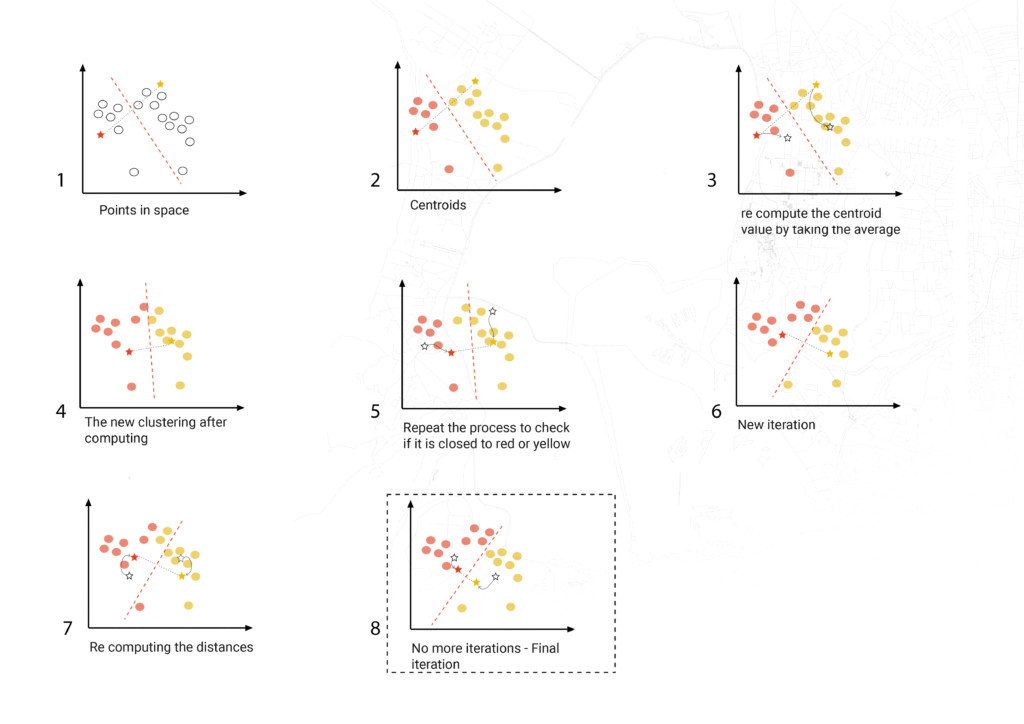
Present Scenario
On-Site Clustering
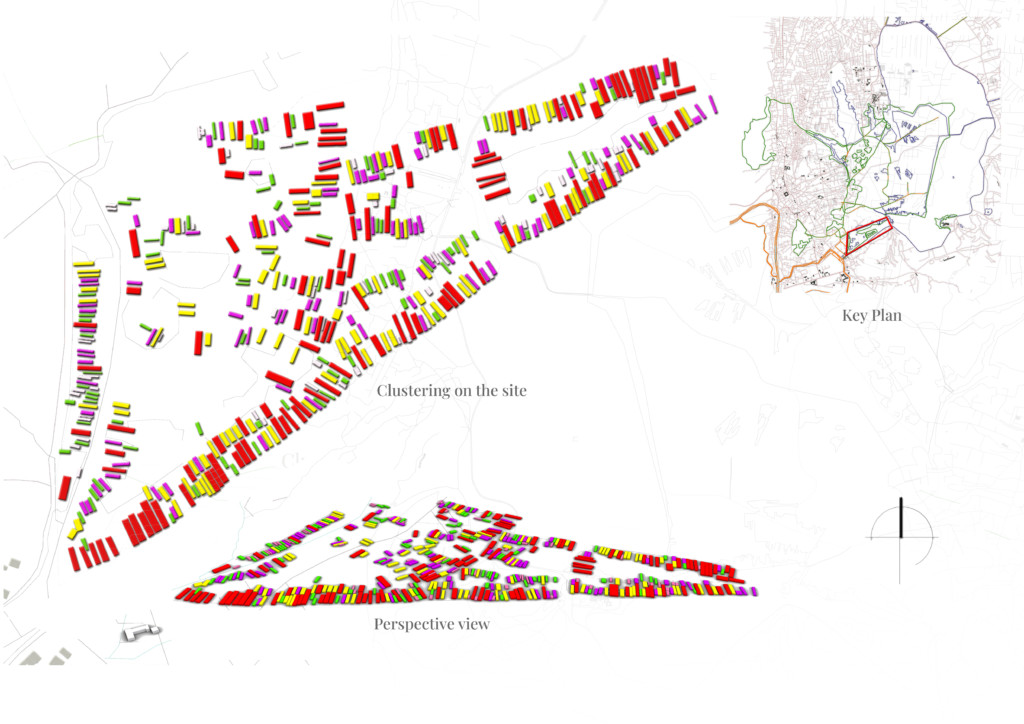
Pseudo Code
Steps for clustering
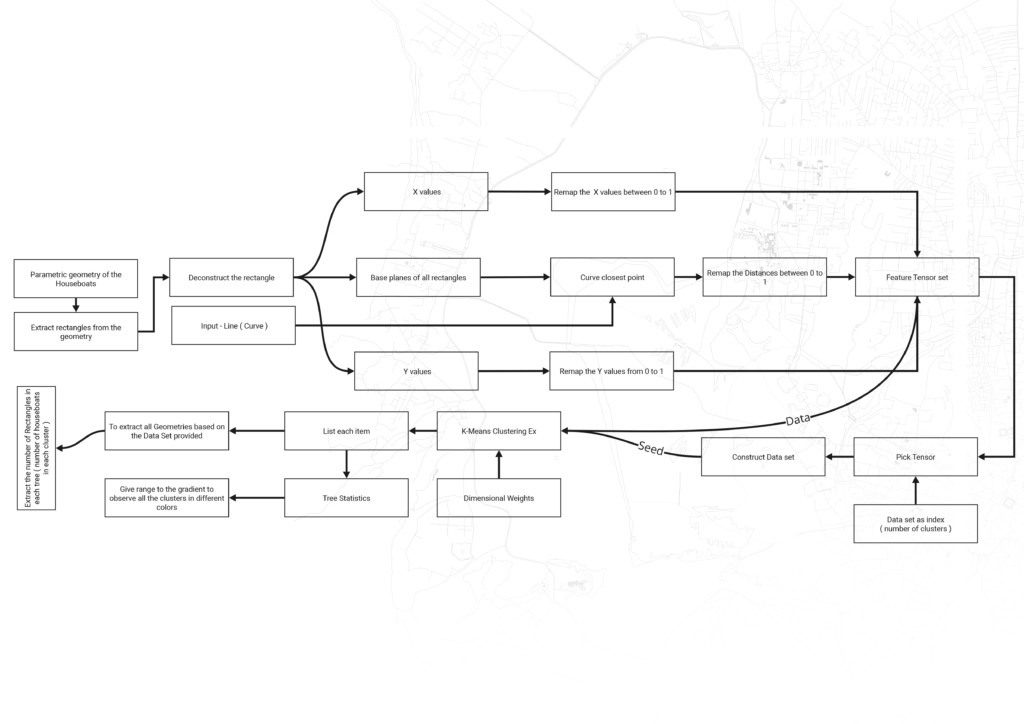
Script
Clustering into 3 groups k – 3
 Iterations
Iterations
Re-organising / Clustering – 3 data types as input – 3 Clusters
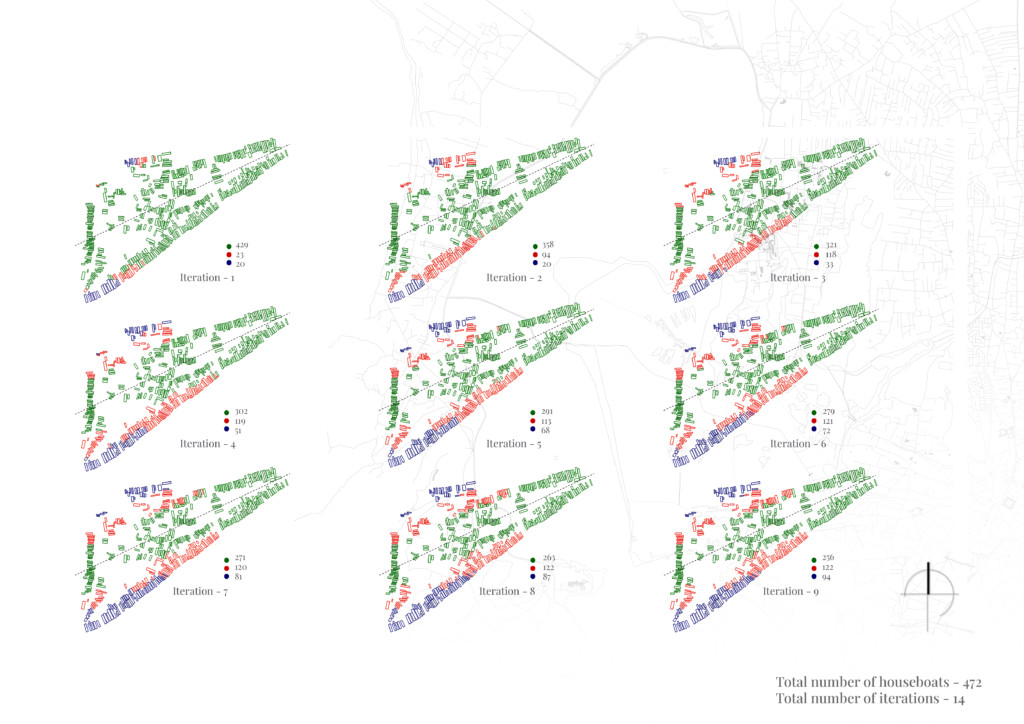
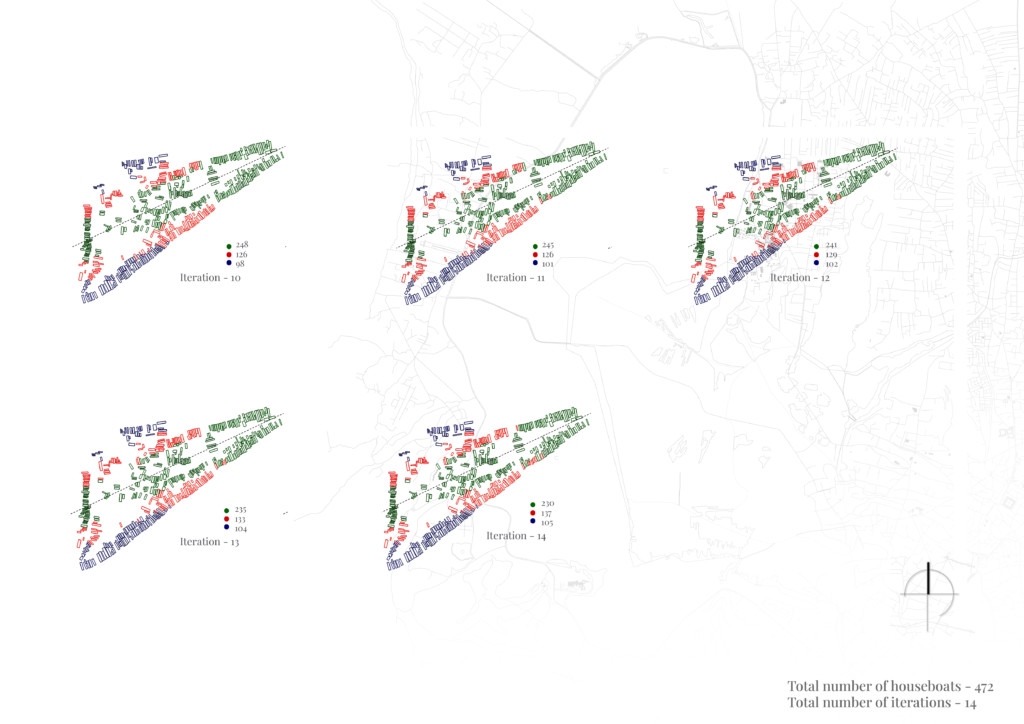
Iterations
Re-organising / Clustering – 4 data types as input – 4 Clusters
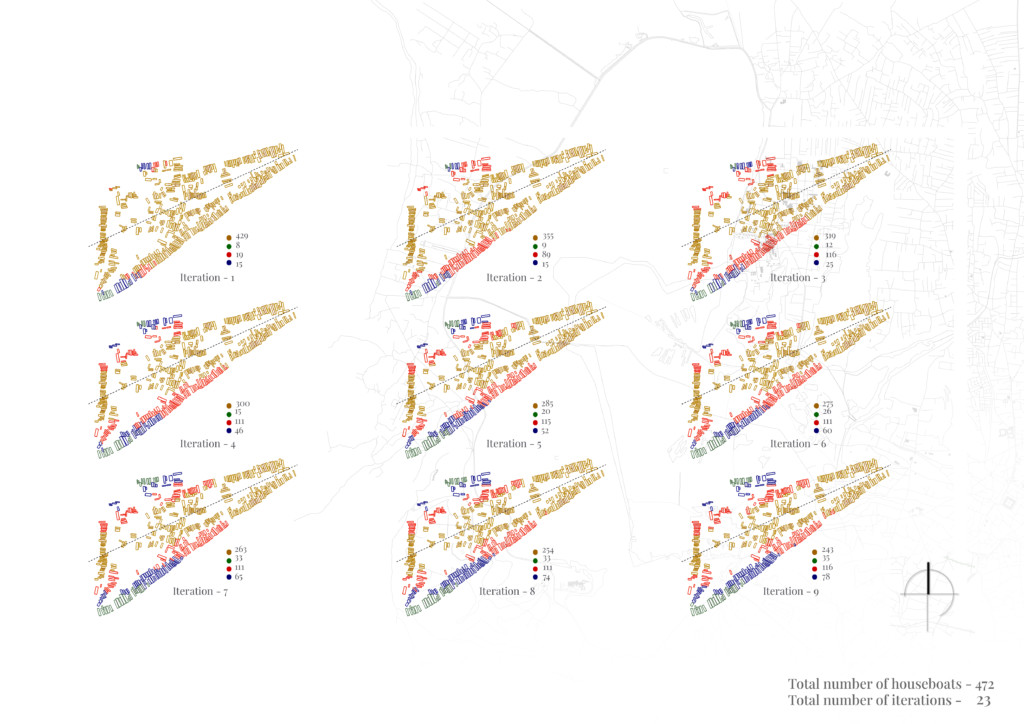
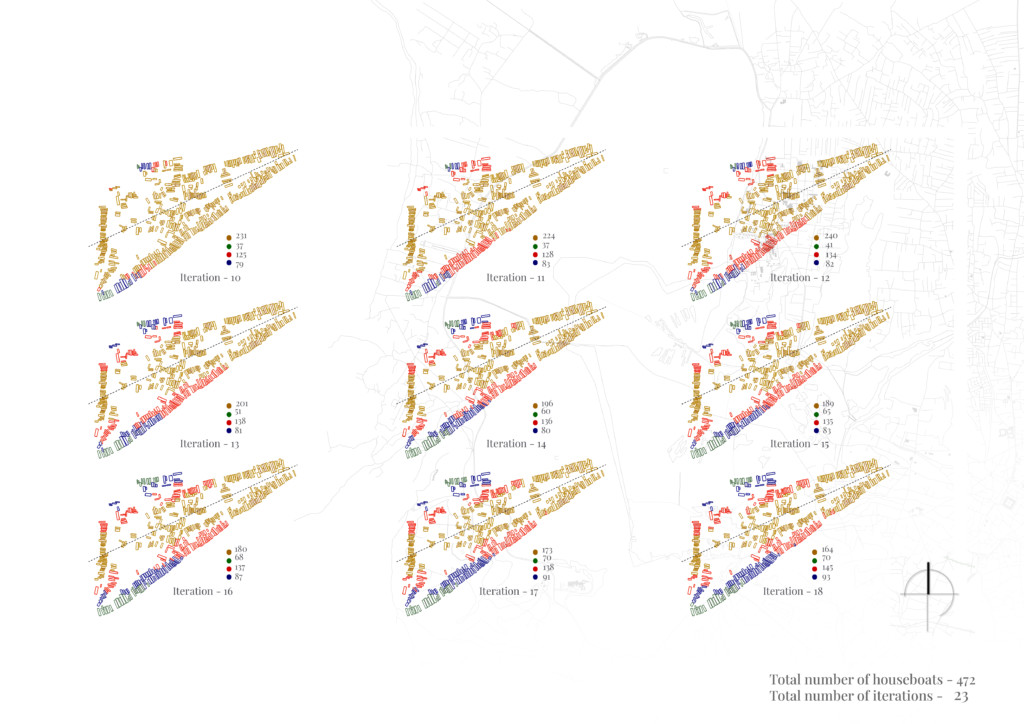
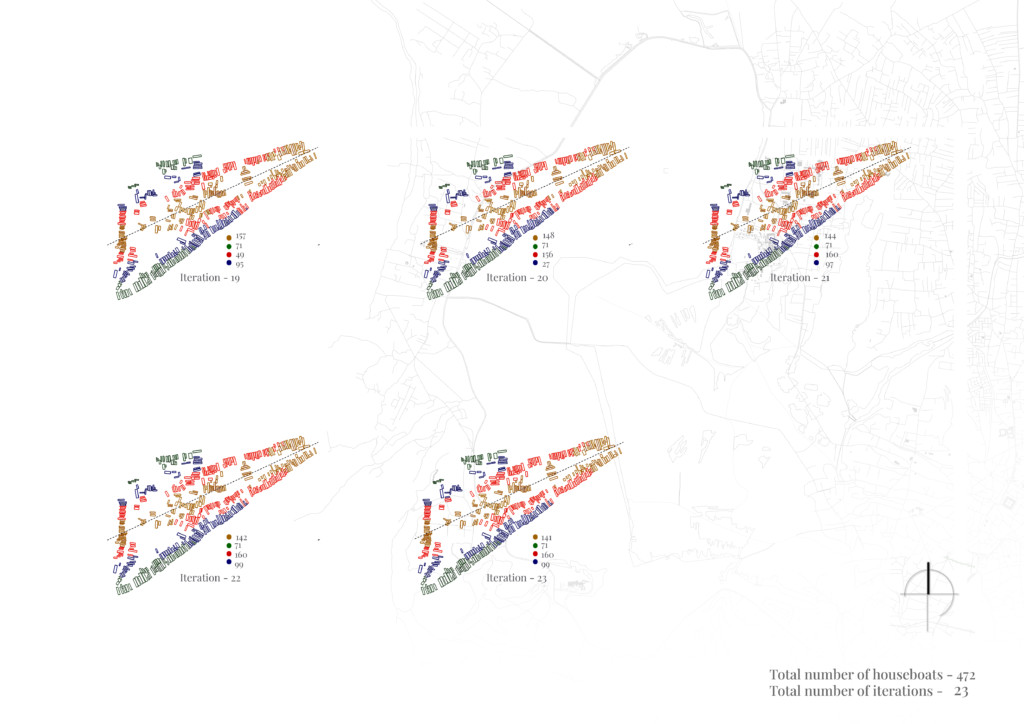
Conclusion
With the objective being to find new typologies through an AI way, what we see here is that there is a new bunch/clusters that the AI has given us, which approves the methodology. In any case, since this strategy is automated we can separate the houseboats according to the necessity by just changing the data sets, and we no longer require a manual characterization/classification process.
Furthermore, this is actually the thing AI is for, it figures out how to copy knowledge. And, this knowledge offers us the chance to computerize the cycle.
Water-Borne Community_ AI in Redefining Urban Sustainability in Kashmir is a project of IAAC, Institute for Advanced Architecture of Catalonia developed in the Master in Advanced Architecture 2021/22 in the Business Innovation Seminar by Students: Abrar Ali and Ashwin Parandhaman Faculty: Mateusz Zwierzycki